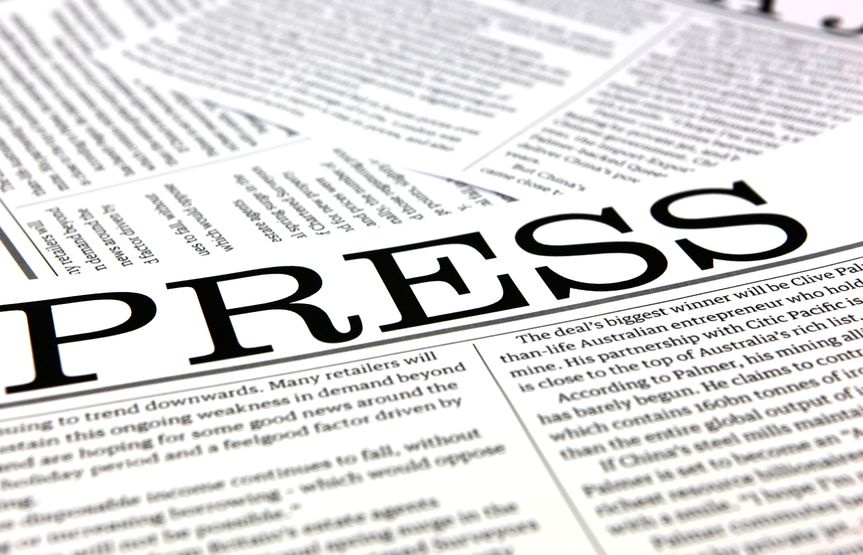How to write the perfect press release

Published 20/10-2014 by Rene Hjetting
Press releases are the fastest, cheapest and most immediate way for a company to get in contact with the general public - i.e. with the press, customers, and the entire companys internal and external networks. But how do you write a powerful press release? Here are some very basic guidelines:
Ease journalists work
The press release is written to make work easier for the journalists - it is no secret. Today, the fact is that the majority of all news stories can be traced back to a PR investment, typically a press release, so what matters is to slide into the flow with your message. A press release is a short article, which in principle should be able to be published in e.g. a newspaper in unchanged form. The more the press release speaks the news language the journalists themselves use, the greater is the chance that its message become part of the news. And it requires two things: You must have an interesting message, and you must present it properly - journalists rarely fall for empty PR stunts. When you write the press release, it is therefore a good idea to keep in mind that there are two target groups, the text should take account of: 1) the journalist, in order to bring further the story and 2) the actual target group (e.g. potential customers).
Is this news?
A press release is not a sales letter. All of this journalists readers must get something out of your news, and if your press release does not have a broad appeal, it shall either be rewritten or directed at narrow media types. It is important to find a good angle on the story: first, the news aspect must exist - it can for example be a new product, a new invention, a study or conflict matter - and then, the news must be placed in a context that makes it relevant to as many readers as possible. Depending on the media type you want your story brought in, you can choose a financial or human angle. If your news is part of a trend, it is also worth noting (More and more...) - and the more surprising it works, the better.
The headline: formulate the message
It does not at least apply to the title, which is the most important sentence in a press release. The title must contain the complete message in ultra short form.
Journalists scan many press releases every day, and if the title is unclear, probably they will not read the press release. An unclear title suggests a confused text and points out that the sender is in doubt as to what the message actually is. If you are not fully aware of why your story should go to to the media, the journalists are not interested in going any further with this press release. This is why it is a good idea to begin the work of finding the title - perhaps not the final wording, but the keywords and aspects that are essential in the description of the news. Thus, you have the red wire, and the rest of the press release is written much easier.
Introduction: lure the reader further
After the heading follows three or four lines of introduction, which elaborates on the title. Here the language is more compressed than in the rest of the text and on the contrary more detailed than the heading. Make sure the title and introduction work together in a sovereign manner, the opening must continue the headline meaning by deepening the title and at the same time be a summary of the rest of the text, which is so exciting that the reader cannot help but continue. And remember: rarely there is room for more than one message in a press release. You must choose and then shape the text for all the information to underline and elaborate on the overall message, without it coming to repetitions.
One page is enough
A press release must not be longer than one A4 page, exactly 400-500 words. The primary function of the press release is to get the journalists to get interested, for them to contact you for further information, where you will have ample opportunity to go into the details. Annexes in the form of photos or links to, where photos can be downloaded in high quality, help to serve the story on a silver platter, but do it with care. Do not overload the press release, and select the most appropriate data, while referringd to the rest. If the story is good, everything else follows.
Write properly!
Always double-check all the information, and proof read several times, possibly with professional assistance. Linguistic errors will lead to a significant risk that no more than 2 lines of your press release will ever be read. It is consistent with the key task of the press release: it is a precise, short and concise form of communication, which has been cut through the clutter. It also means that this press release is devoid of expressions of kindness, jargon and consent language, nor humour belongs in a text with such a direct communication. The risk that humour and other complicity is misunderstood in writing and interfering with the message, is imminent. Focus instead on objective dissemination of your central message - and remember to indicate clear contact details at the end of the text.
Tell the story
It is difficult to deal with clean data. A story, however, can evoke emotion and create pictures in the reader. If a press release on annual accounts concentrates on words such as prosperous, profitable and profit margin, there is no story or recognition for the vast majority of readers. Instead, one should focus on the story of how the surplus has been created - this way you all of a sudden have a tale of how a company has changed the direction of the ship and through innovative thinking has created new jobs. Concrete examples of the texts message prepare the message and makes it much easier to remember.
Credibility is crucial
Do not distort reality - this journalists vigilance wakes up quickly by coating descriptions, and interest in him is lost. For instance, if you write that your business is cheaper than competitors, it requires that this is indeed the case (without hidden fees, requirements on other purchases, etc. ). The journalist expects that what you write in a press release is credible, or the grape vine quickly reacts and may create a negative image in the media, if it does not hold water. Among other things it is therefore MyPressWires strategic obsession, that you by meeting the journalists need for relevant and reliable information, you also meet the needs of the communicator.
You can send out your press releases with MyPressWire, and if you are not already a customer, you can register for free here and start issuing press releases.
 About Rene Hjetting
About Rene HjettingHas worked in PR, online marketing and social media the past 12 years and has helped many people and businesses to success with his advice. René is also the author of the book: How to get success with PR and social media.







